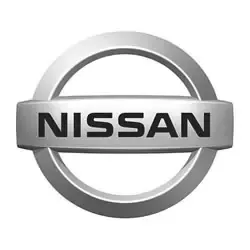Nissan NV2500 Tire Pressure
Most common recommended tire pressure for Nissan NV2500 can range from 50 psi to 80 psi depending on year of production, trim and OEM tire size, but it maybe different for older models. It is imperative to confirm the exact tire inflation for your Nissan NV2500 to ensure safety on the road. Always refer to your vehicle owner's manual for the correct tire pressure designated by vehicle's manufacturer.
Select your Nissan NV2500 production year to see its recommended tire inflation.
| Model Year | Front Tires | Rear Tires |
|---|---|---|
| 2021 Nissan NV2500 | 50 psi | 80 psi |
| 2020 Nissan NV2500 | 50 psi | 80 psi |
| 2019 Nissan NV2500 | 50 psi | 80 psi |
| 2018 Nissan NV2500 | 50 psi | 80 psi |
Recommended Tire Pressure for Nissan NV2500
Maintaining the recommended tire pressure for a Nissan NV2500 is critical for several reasons, directly impacting safety, fuel efficiency, and the longevity of the tires themselves. Operating this vehicle within the tire manufacturer's recommended pressure range ensures that the vehicle maintains optimal contact with the road, enhancing stability and handling characteristics, especially important for a vehicle of this size and capability. Properly inflated tires are less prone to blowouts and can significantly reduce the likelihood of accidents resulting from tire failure. From a financial perspective, keeping the tires at the correct pressure maximizes fuel efficiency, as under-inflated tires increase rolling resistance, requiring more fuel to maintain the same speed. Additionally, tires inflated to the proper level wear more evenly and slowly, extending their useful life and saving money on replacements in the long run. Regularly checking and adjusting the tire pressure on your Nissan NV2500 is a simple yet effective way to ensure the vehicle operates safely, efficiently, and cost-effectively, reflecting the best practices of vehicle maintenance and care.

All listed guides, data and/or calculations are for informational purposes only. TirePressure.com does not warrant or make any representations regarding the accuracy of or the results of the use of this information. Always refer to vehicle owner's manual for the correct tire pressure configuration.